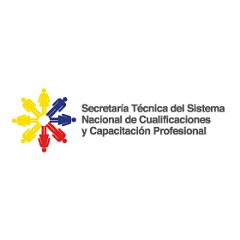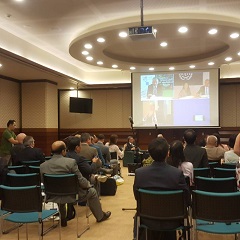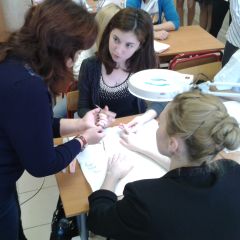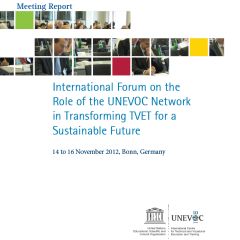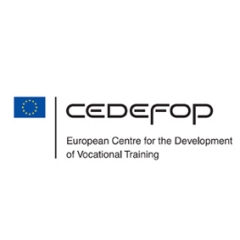|
|
Greening TVET
Overview
|

|
| Click above to download |
Technological and societal developments and growing concerns about climate change, environmental degradation and scarcity of resources are changing the nature of work. These developments demand that TVET develop skills and provide knowledge to ease transitions to green economies and societies.
In light of the Sustainable Development Goals (SDGs), TVET underpins many of the proposed goals and the achievement of sustainable development. TVET is crucial in reorienting society to adopt the low-carbon mentality so essential to addressing climate change. It is also impossible to think of making gains in poverty reduction, job creation and decent work provision without transforming TVET. For example, Goals 4, 6 and 8 of the SDGs are directly related to TVET, with many of the targets capable of being supported by a well-designed TVET system and targeted skills-development interventions.
Why TVET institutions must engage in greening process?
TVET plays an important role in making transitions to a low-carbon economy and climate-resilient society. It is carried out through the traditional roles of TVET in preparing learners for the occupational fields and increasing their participation in the world of work. These traditional roles are facing new expectations:
 Read more Read more
- TVET for educating and training individuals to transition to a sustainable society
Human activities, as well as occupations in the workplace, need to be carried out in a way that is sustainable and environmentally friendly. Since many human activities in the past have not achieved this, there is a need to adapt the processes in personal consumption as well as in occupations that are carried over from the past, and to develop new sectors of activity to replace environmentally unfriendly alternatives. They are essential to create a more sustainable society: for instance, developing skills and promoting the study of technologies that lead to avoiding as far as possible the use of irreplaceable raw materials, recycling waste, minimizing energy use, and avoiding pollution of the environment. The opportunity to develop entrepreneurial learning through vocational education and training could also lead to creation of sustainable enterprises and social enterprises that work for the common good of the society. Many of these enterprises address more efficiently social, human and environmental concerns.
- Making TVET input current and relevant for ongoing labour market regulations
There are a large number of TVET graduates working throughout the economy. Many employment sectors are regulated by standards covering their operations, and many jobs have defined skills standards. Individuals typically undertake TVET with the aim of obtaining the skills level or qualifications needed for regulated occupations, or jobs for which standards of competence or level of skills are clearly established to perform the job. As well as regulations covering personnel qualifications, much economic activity is governed by regulations covering operations more widely (although to a degree that varies between countries and between sectors). Unfortunately many existing regulations and standards date from an era before the need for sustainability was fully appreciated, and have not yet been fully updated to meet the requirements of transition to a green economy. They may even help to maintain a ‘business-as-usual’ mode of operations, work processes and methods, when this is patently not sustainable: using raw materials, creating waste and emissions, to a degree that causes unnecessary harm to the environment.
- Instilling consciousness, motivation to develop a green culture
Staff and students in learning institutions may not have reached the point of understanding what needs to be changed to achieve sustainable development. Even when they appreciate the issues, they may not possess the motivation to be part of a bigger transformational agenda that is possible through a collective movement. It is first necessary to ensure that there is a collective appreciation of the changes in the economy and society that are needed to achieve sustainability. Then it is necessary for them to act corresponding to these changes. Mobilizing collective action can be made by establishing green agendas as a norm in an institution. Factors preventing or slowing change can be addressed together with a common goal, an enhanced motivation and a collective action to demonstrate good practices. This paves the way for developing a new culture and guiding those involved so changes do take place.
Why invest in greening TVET
- Greening TVET helps production to advance to more environmentally conscious practices;
- A ‘green’ worker is a more employable worker; a ‘green’ workforce will enhance the profitability of the enterprise;
- National governments need to seize the potential for job creation by providing skills needed in the new green sectors;
- Disadvantaged groups in the labour market (young people, women, persons with disabilities, rural communities and other vulnerable groups) require targeted support to develop their potential knowledge and skills for green jobs.
Source: UNESCO-UNEVOC (2012).
What the greening of TVET institutions can achieve?
UNESCO-UNEVOC contributes to the fulfilment and monitoring of the SDGs by promoting the greening of TVET institutions. This is projected to help institutions create an institutional environment that makes it conducive for institutional stakeholders contribute to achieving the goals of the SDGs, namely SDG 4 (Quality Education); SDG 6 (Clean Water and Sanitation) and SDG 8 (Decent work and Economic Growth).
 Read more Read more
In the context of TVET, a ‘whole-institution’ approach to implement education for sustainable development would be ideal. Greening is used as a process of pursuing knowledge and practices with the aim to be more environmentally friendly and enhance decision-making and lifestyle in more ecologically responsible manner, that can lead to environmental protection and sustainability of the natural resources for current and future generations. If adapted to educational and training activities of an institution, it could lead to an incremental and systematic process of change. The greening of TVET institution process invites actors of training and learning to engage in approaches that seek to develop knowledge, skills and attitudes that can lead to more sustainable practices in the community, the workplace and other settings where knowledge and skills could be applied. It can also lead to obtaining professional qualifications or proofs of learning that reflect environment-friendly skills to perform tasks.
In the context of implementing UNESCO’s Global Action Programme on ESD (GAP in ESD), UNESCO-UNEVOC promotes the implementation of Greening TVET. It has a broad aim of supporting institutional policies and capacities; transforming learning and training environments that can impact the immediate communities and their needs; and addressing the capacity needs of institutional leaders, principals, training managers, teachers and trainers.
The ‘greening’ process for TVET institutions
How to green TVET institutions: a four-step guide for implementing approaches to sustainability in TVET
STEP 1: Understanding the process
STEP 2: Planning for the greening of TVET
STEP 3: Implementing an Institutional Green Plan
STEP 4: Monitoring and Assessment Strategies
 Read more
The Five Approaches to Sustainability Read more
The Five Approaches to Sustainability
Greening the campus
Aims to manage the campus in such a way that it could strengthen its operating mechanisms, adhering to the highest sustainability principles and practices that can reduce its ecological footprint.
The term ‘campus’ refers initially to greening a broad range of physical features – buildings, landscape, maintenance procedures and campus services. The initial goals are often to reduce the costs associated with resource usage such as energy, water and waste, and to reduce and better manage the institution’s GHG footprint. The savings achieved are then often used as the means for funding the overall greening plan within an institution.
The procedure involves adapting institutional operating goals and methods so as to improve the overall efficiency, conformity and costs in running the institution. These economies may be achieved through adapting facilities to conform to new building standards (or code of practice) for energy efficiency, or enhancing the environmental conditions and aesthetics of the grounds while reducing water resource use.
As well as the buildings and their maintenance and procedures, other services such as food, procurement and transportation are usually seen as integral parts of greening the campus. Greening also entails making the campus a better place to live and work, with good air quality and daylight to facilitate learning processes and improve learning outcomes, a safer place for the members of its community, and/or making the campus more accessible for students with disabilities. Greening the campus is all about creating an institution that can become a model of sustainable living and an inclusive laboratory of ideas, skills and innovations for sustainable development. It also represents a place where sustainable, healthy and safe conditions exist, which improves the opportunity for students – of all creed, religious beliefs and gender - to learn technical skills and obtain the knowledge, skills and attitudes that lead to formal qualifications, and help them lead a sustainable work and life.
Outcomes:
- Sustainability principles are applied in the institutional structures, philosophies and services, learning processes and physical site;
- Resources are deployed to support an institutional green movement;
- Financial returns and status benefits for the institution through cost savings, improved facilities and institutional development.
Greening the Curriculum and Training
Aims to integrate sustainability into the existing curriculum and training of an institution.
As well as greening the campus, it is also crucial to address what is taught to the students in both institution-based and work-based settings. ‘Greening’ the mind is facilitated through identifying the short-term skill needs and the changes over time that will prepare students to play a role in a dynamic and greening process of the economy. Correspondingly, it entails adapting relevant contents and training so that knowledge and skills are imparted that satisfy the needs of current structures, technologies and job tasks of occupations in the labour market. It also involves ensuring that the process and outcomes of training are evident of the acquisition of practical skills that can add value to sustainably performing the job in a more sustainable manner, and simulate this experience in real work-place setting.
In every discipline, there is an opportunity to contribute to a basic understanding of sustainability and its importance for the future. This greening of the curriculum should not be limited to environmental issues alone, but should also address social and economic aspects, and their skills implications. How learners progress through learning for sustainability can be supported effectively by career guidance and the development of upskilling programmes to promote the alignment of skills with the needs of the economy.
What is developed in the curriculum has expanded considerably over time. This Guide adapts UNESCO’s definition of curriculum. Properly oriented to sustainability contents, objectives and outcomes, this defines it as an effective and organized programme of both theoretical and practical studies, the successful completion of which would lead to achieving educational goals attuned to SDGs.
Greening the curriculum and training means adapting training disciplines to sustainability concepts and practices in the curriculum used in formal TVET, as well as in non-formal or informal training/learning for young people and adults in a work-based context to enable them to acquire practical skills and participate in green transitions.
Outcomes:
- Environment-related contents and green skills development are part of an evolving TVET curriculum and training;
- Teachers and trainers are supported to be competent and develop confidence in delivering relevant contents on sustainability across disciplines;
- Students are equipped with knowledge, skills and competencies adapted to the needs of societies and economies, and that are valued in the world of work;
- Students are well informed and guided through the ongoing process of learning for sustainability.
Greening Research
Aims to apply sustainability in research philosophies, content, ethos and standards.
Green research is, and must be, an integral component of the institutional culture. As well as investigating concepts, beliefs and theories on how to better manage the greening of operations, products, student/trainee/community outcomes and the correction of unsustainable patterns of consumption and production, it stimulates the commitment of both teachers and students to carry out research on matters that contribute to discovering practical solutions to problems of either an academic or empirical nature.
Research involves the systematic collection of data that can support students, teachers and communities in reaching where they want to be, establishing and accessing adequate labour market data and information about skills and skills forecasts that can inform decisions and direct learners to a just transition to decent work and life. Apart from identifying research themes, such matters as ethical principles and considerations for undertaking research procedures, and locating appropriate sources of information, are very much part of this process.
Outcomes:
- The institution implements sustainability plans and principles based on research data, and disseminates them;
- The institution proactively engages in collecting labour market information and data useful for students, graduates and the learning community;
- Teachers and students are engaged in projects that investigate applications of sustainability practices and develop solutions together;
- The institution applies standards of research ethics responsibly as part of the interdisciplinary implementation of research processes.
Greening the Community and the Workplace
Aims to stimulate institutions to engage with enterprises and the wider community in the institution’s institutional greening plan and programmes.
Whereas the need for greening commerce has emerged as a top priority in the business world, there is a need to prepare students with the fundamentals of sustainability within the workplace in which they find employment and within communities where skills are valued as an integral part of local or community-based development. While greening the curriculum for work-based learning emphasizes what is taught to students or employees in a work-based setting, the ‘greening of the workplace’ focuses on what TVET education can contribute to influencing the greening of work environments or businesses. In simple terms, this means promoting practices that contribute to reducing the environmental impact of business practices and, where possible, jointly developing sustainability programmes and projects to address local issues.
Adapting greening to corporate structures and business development is as important as embedding sustainability in the operating norms of enterprises. Greening the community and the workplace cannot happen without development of local skills and resources that can grow sustainable local markets and enterprises.
Outcomes:
- The institutional community contributes to sustainable lifestyle, consumption and production;
- The institutional community preserves the deep-rooted sustainable practices of local and indigenous communities;
- Sustainability projects involve school communities and partners;
- The institutional community develops networks of partners in the business community, local enterprises and industries;
- The institutional community is empowered to influence others in the community and the workplace.
Greening Institutional Culture
Aims to embed sustainability into all the aspects of an institution’s operations and programmes.
It is the practices and culture on campus that set the tone and expectations of all those who work at and learn in the institution. The very ethos of the institution should correspond to the curriculum, the overall institutional greening plan (IGP) and other initiatives within this plan. This will reflect the institutional vision through hiring and promotion procedures, evaluation schemes, rewards and celebrations, and should also be present in the everyday behaviour of the managers, the teaching personnel, other workers and students. This should eventually become part of the institution’s branding and reputation, making it easier for graduates to attain better jobs, while better serving the community’s citizens and enterprises.
Outcomes:
- The pursuit of sustainable development forms part of all institutional strategies and plans;
- Sustainability skills and principles are applied in day-to-day life and decision-making, including interactions with institutional stakeholders;
- Newly acquired knowledge, skills and competencies enhance professional practice, work processes and methods;
The institutional culture is underpinned by values and ethics consistent with sustainable development.
UNESCO Resources
Greening in the UNEVOC Network
The UNEVOC Network is on the forefront of promoting the greening TVET agenda in the Member States. Many of the UNEVOC Centres have begun greening their institutions and can serve as inspirations for institutions that are considering to take actions.
 Read more Read more
- Canada (EU/NA Cluster Network)
The Colleges and Institute Canada recently mapped the approaches and initiatives of its members in greening their colleges and institutions. In January 2017, the result of this mapping exercise was published to understand better the role of Canadian Colleges and Institutes in advancing education for sustainability in Canada and overseas.
Learn more about their approaches and follow the journey of Canada Colleges and Institutes here: https://www.collegesinstitutes.ca/file/green-skills-for-sustainable-economic-growth/
- Jamaica (Caribbean Cluster Network)
HEART Trust/ NTA inaugurated in 2016 a Greening TVET campaign to promote green skills and its alignment with Technical Vocational Education and Training (TVET) for sustainable development.
Discover their vision and key discussions here: http://www.unevoc.unesco.org/network/up/HEART%20Trust%20Greening.pdf
Yaba Technology College, a UNEVOC Centre in Nigeria supports climate change actions by promoting methodological and systematic approach to addressing the changing jobs and skills demands. Its core strategy is to address communities through its initiatives.
Find out more about their projects here: http://yabatechunevoc.org/tvet/greening-tvet
Contact us
We would like to hear from you about your institutional actions.
Contact the UNESCO-UNEVOC Greening TVET and ESD programme to learn more:
Contact: unevoc.greeningtvet(at)unesco.org, Tel: +49 228 815 0123
Our activities

 | 22 May 2019A Chinese UNEVOC Centre combines green skills and e-commerceFrom 29 April to 10 May, the Zheijiang Technical Institute of Economics (UNEVOC Centre in China) delivered a two-week training programme for TVET Teachers on "Green Skills and the New Economy for Sustainable Development". The programme was implemented in collaboration with Colombo Plan Staff College (CPSC) and built the capacity of teachers coming from 12 Asian countries. ( more) |
|
 | 4 March 2019Greening TVET, Job roles, and Curricula To assist UNEVOC Centres in the implementation of Greening TVET, UNESCO-UNEVOC, jointly with the National Skills Development Corporation (NSDC) – a new UNEVOC Centre in India – co-organized a five-day workshop. ( more) |
|
 | 4 September 2018Skills Development and the Water-Energy Nexus in AfricaWater and energy are closely linked, and most African countries face major challenges in improving both their water supply and energy production systems. For African countries to develop their energy and water sectors sustainably, and to capitalize on their potential, skills development at a national level is an essential component. ( more) |
|
 | 3 May 2018Looking at the Future of Education for Sustainable Development, togetherRepresentatives of the key partners of the Global Action Programme (GAP) on Education for Sustainable Development (ESD), including UNESCO-UNEVOC, met at the 3rd Key Partners Meeting (25-27 April 2018), in San Jose, Costa Rica. As the current framework of the GAP on ESD elapses in 2019, this meeting launched a global consultation to chart a course of action beyond 2019. ( more) |
|
|
 | 31 January 2018Germany deepens regional exchange in Asia-PacificFrom 19 to 20 October 2017 in Nanjing (China), the Federal Institute for Vocational Education and Training (BIBB) together with its German and international partners, organised several panel discussions, presentations and interactive formats to discuss the role of VET for a sustainable social and economic development. ( more) |
|
|
 | 12 March 2017CICAN releases a publication on green skills Colleges and Institutes Canada, panCanadian UNEVOC centre, is pleased to announce the release of the publication Green Skills for Sustainable Economic Growth: The Role of Canadian Colleges and Institutes in Advancing Education for Sustainability in Canada and Overseas. Authored by researcher Helen Knibb (Canadian Studies doctoral program, Trent University, and former faculty from Fleming College), the report was commissioned by CICan in 2016 as part of input on our members’ behalf to Global Affairs Canada’s review of international assistance. ( more) |
|
|
 | 28 November 2016Supporting rural youth to acquire green skills and realise their ideasAccess to education and training that allows rural youth to have decent work opportunities is still limited in Paraguay. The Fundacion Paraguaya uses unique and innovative approaches to meet learning needs of rural youth. UNEVOC Centres from Latin America met on the San Francisco campus of the Fundación Paraguaya to discuss the use of ICT in the provision of TVET in rural contexts. ( more) |
|
 | 18 November 2016Education and training central in climate change agreementsThe 22nd Conference of Parties (COP22) organized by the United Nations Framework Convention on Climate Change (UNFCCC) in Marrakesh, Morocco, reaffirmed Member States’ commitment to the COP 21 Paris Agreement. UNESCO, UNESCO-UNEVOC and partners contributed to the discourse that meant to highlight concrete actions to implement the agreement. ( more) |
|
|
|
 | 23 December 2015First Global Forum on Green Economy Learning in Paris, FranceFrom 16 to 18 December 2015, the 1st Global Forum on Green Economy Learning held in Paris, France, convened approximately 70 policy-makers, development partners, and representatives from education and training institutions, NGOs and business associations to identify opportunities for improving green economy learning. ( more) |
|
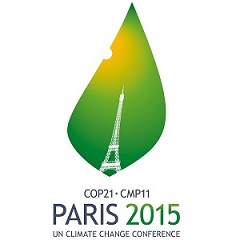 | 16 December 2015UNESCO-UNEVOC at COP21UNESCO-UNEVOC contributed to a number of events at the United Nations Climate Change Conference (COP21) that took place in Paris from 30 November to 12 December. ( more) |
|
|
|
|
|
 | 27 October 2015Virtual Conference: Greening TVET in the context of climate change policy developmentsFrom 2 to 13 November, you will have the chance to participate in our next virtual conference on greening TVET in the context of global climate change policy developments. This online conference will be moderated by Dr Nick Sofroniou, Principal Research Fellow at Institute for Employment Research of the University of Warwick and an expert in green skills development. ( more) |
|
 | 1 October 2015Adoption of the Sustainable Development GoalsOn Friday 25 September 2015, the United Nations Sustainable Development Summit adopted the Sustainable Development Goals which seek to realise inclusive and equitable economic, social and environmental sustainable development. ( more) |
|
 | 28 September 2015UNESCO-UNEVOC participates in UKFIETFrom 15 to 17 September 2015, 550 participants met in London, the United Kingdom, for the UKFIET International Conference on Education and Development. ( more) |
|
|
 | 28 September 2015First Global Forum on Green Economy Learning From the 16 to 18 December 2015, the 1st Global Forum on Green Economy Learning will bring together policy-makers, development partners, as well as representatives from education and training institutions, NGOs and business associations to identify opportunities for improving green economy learning. ( more) |
|
 | 17 September 2015Virtual Conference: UNESCO’s future TVET strategy From 28 September to 3 October, you will have the chance to participate in our next virtual conference on UNESCO’s future strategy for TVET (2016-2021). This online conference will be moderated by Mike Campbell, an expert in the fields of skills, labour markets and the economy. ( more) |
|
|
 | 15 July 2015Celebrate World Youth Skills Day on 15 July!Join the United Nations in New York and Bonn in celebrating the first-ever World Youth Skills Day! The goal of this celebration is to achieve better socio-economic conditions for today’s youth and to address issues of unemployment. ( more) |
|
|
|
|
|
 | 22 December 2014Skills Forum at the Asian Development BankThe Asian Development Bank held its Fourth Annual International Skills Development Forum in Manila. UNESCO-UNEVOC joined the event with UNEVOC Network members from the region. ( more) |
|
 | 16 December 2014GreenTech experts meet in BerlinWhat is the impact of green technologies? Experts discussed the influence of green technology on the economy, politics, employment and education at "GreenTech made in Germany" in Berlin on 27 November 2014. ( more) |
|
 | 16 December 2014Green Cities – Green Industries – Green JobsMore and more people live in urban areas. Cities have to find solutions to challenges such as rising traffic and increasing waste. UNEVOC Network member GIZ and the city of Magdeburg invited partners from around the world to discuss challenges and opportunities of green cities and industries, and what this means for the creation of green jobs. ( more) |
|
|
 | 19 November 2014End of the Decade of Education for Sustainable DevelopmentGreen skills are a priority for aligning TVET with the post-2015 development agenda. UNESCO-UNEVOC and the Inter-Agency Working Group on Greening Skills and TVET ran a discussion on the Role of greening TVET on 11 November 2014 at the closing of the Decade on Education for Sustainable development in Nagoya, Japan. ( more) |
|
|
 | 27 October 2014Happy birthday United NationsThe City of Bonn held a celebration on Market Square to commemorate the United Nations’ anniversary on Saturday, 25 October 2014. UNESCO-UNEVOC joined the festivities with an information booth, a quiz and a drawing contest. ( more) |
|
 | 14 October 2014Skills for Work and Life Post-2015As a follow-up to regional consultations in 2013, UNESCO-UNEVOC is organizing a global forum to be held from 14 to 16 October at the UN Campus in Bonn, Germany. The forum seeks to contribute to the ongoing debate, enriching the thought processes behind the positioning of TVET in the post-2015 agenda and it will utilize cross-regional networking and partnership as platforms to create synergy in the contribution of TVET in the post-2015 agenda.
( more) |
|
 | 17 September 2014Water Hyacinth Project in YabaTech UNEVOC CentreThe Water Hyacinth Project in YabaTech was initiated by the Coordinator of YabaTech UNEVOC Centre, Dr (Mrs.) Funmi Doherty in 2012. She is mentoring students through her water hyacinth project, to turn the invasive plant into a money maker, training them on how to make different eco-friendly hand craft, biogas and animal feed from the plant. She teaches students on how to harvest the plant, dry it and weave into products that can be sold by the students. ( more) |
|
|
|
|
|
 | 17 February 2014UNESCO-UNEVOC participates in Green Skills Forum 2014 Organized by OECD and CEDEFOP, the second Green Skills Forum held in Paris, France, on 14 February 2014 brought brought together over 90 experts, researchers, economists, government advisers, employment and policy analysts and social partners to explore the links between skills and knowledge needs and inclusive green growth ( more) |
|
12 February 2014Green Skills Forum 2014: Green Skills and Innovation for Inclusive Growth The 2nd Green Skills Forum will have a special focus on the links between skills and knowledge needs and inclusive green growth. Experts in innovation, employability and skills development policies will draw lessons from work conducted by Cedefop, the OECD and other organisations in this area. The discussions will help identify the obstacles and challenges lying ahead for the development of skills, education and training policies. The Forum’s outcomes will contribute to inform new work to be conducted to address the transition of labour markets to greener employment growth. ( more) |
|
 | 3 December 2013Regional Forum on Status of TVET in the SADC RegionBased on the findings of a regional study conducted by UNESCO on the Status of TVET in the SADC Region, representatives of the SADC Member States convened in Stellenbosch, South Africa from 25 to 29 November 2013 to discuss the progress of actions undertaken to reform their countries’ TVET systems since the assessment. ( more) |
|
|
|
|
|
 | 21 October 2013UNESCO-UNEVOC virtual conference on greening TVET From 12 to 26 November 2013, UNESCO-UNEVOC is organizing the second virtual conference on Greening TVET on the UNEVOC e-Forum. Moderated by Dr Julia Kastrup, the discussions will focus on clarifying how to support processes of Greening TVET and sustainable development in policy and practice, with an emphasis on qualifications needs and implementation strategies. ( more) |
|
|
|
|
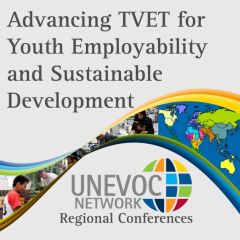 | 27 August 2013Strengthening regional harmonization for the transformation of TVET To strengthen global and regional harmonization for the advancement of TVET transformation through the capacities of UNEVOC's unique global Network of specialized TVET institutions and affiliated partners, the UNESCO-UNEVOC International Centre is organizing a series of meetings to be held in all regions of the world.
( more) |
|
 | 12 August 2013Skills for inclusive and sustainable development in BotswanaFrom 27 July to 05 August 2013 and under the kind invitation of the Republic of Botswana, Mr Shyamal Majumdar, Head of UNESCO-UNEVOC, and Ms Mmantsetsa Marope, Director of the Division for Basic Learning and Skills Development at UNESCO, undertook an exploratory mission to Gaborone, Botswana. ( more) |
|
|
|
|
|
 | 3 May 2013International Forum on new trends in water-related capacity developmentOn the occasion of Wasser Berlin 2013, the UNESCO-UNEVOC International Centre, in collaboration with the UNW-DPC organized a session entitled "Adding Value in Water-Related Capacity Development" during the international forum focusing on new trends in water-related capacity development" on 25 April 2013 in Berlin, Germany. ( more) |
|
|
|
|
|
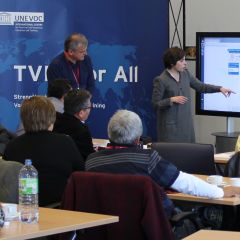 | 5 December 2012Delegates from Peru visit UNESCO-UNEVOC On 4 December 2012, the team of UNESCO-UNEOVC welcomed fifteen delegates from Peru specialized in the field of vocational education in the water sector to the Centre’s premises in Bonn, Germany. ( more) |
|
|
 | 15 November 2012TVET as the key to sustainable developmentOn Day 1 of the International Forum on the role of the UNEVOC Network in transforming TVET for a sustainable future, over 100 delegates from over 50 countries gathered to share their knowledge and commitment to TVET development worldwide. ( more) |
|
|
|
|
|
|
|
|
 | 11 May 2012UNEVOC at IFAT Entsorga Trade Fair in Munich, Germany, 7-11 May 2012UNESCO-UNEVOC participated in the IFAT Entsorga Trade Fair for Water, Sewage, Waste and Raw Materials Management, that was held in Munich from 7 to 11 May 2012. With over 100,000 visitors from 180 countries, IFAT is the world’s largest trade fair for water and sanitation issues. ( more) |
|
|
|
|
|
 | 10 August 2011Open Intl. Competition: International Study on skills formation for green development ( more) |
|
|
 | 21 April 2011Students from Hong Kong University visit UNESCO-UNEVOC ( more) |
|
 | 10 November 2010Meeting: TVET and ESD in CIS CountriesThe meeting aimed to support educational leaders from UNEVOC Centres to assist CIS countries in addressing global sustainable development challenges. ( more) |
|
|
 | 5 October 2010UNESCO-UNEVOC participated in the IFAT Entsorga Trade Fair in Munich ( more) |
|
 | 29 July 2010Green TVET and ESD, Munich and Magdeburg, Germany, 13-17 September (Update August 2011 - Report published) ( more) |
|
 | 19 March 2010Developing Innovative Approaches to ESD: Curriculum Reform in TVET in China ( more) |
|
 | 3 December 2009Training materials for herders in Mongolia ( more) |
|
 | 3 December 2009Asia-Pacific meeting on TVET teacher education for sustainable development ( more) |
|
|
 | 28 June 2009"Curriculum Development in TVET", Brunei Darussalam, 15-18 June 2009
( more) |
|
 | 16 June 2009TVET and ESD in the Commonwealth of Independent States ( more) |
|
 | 5 June 2009Curriculum reform in TVET China ( more) |
|
 | 2 April 2009UNESCO World Conference on ESD in Bonn ( more) |
|
 | 2 April 2009TVET workshop at UNESCO World Conference on ESD ( more) |
|
 | 17 February 2009Tamagawa University delegation visits UNESCO-UNEVOC ( more) |
|
 | 19 September 2008International Roundtable: The Return of TVET to the Int. Development Agenda? ( more) |
|
 | 26 June 20088-11-2007
Corporate Social Responsibility and ESD ( more) |
|
 | 10 April 2008Skills development for the water and sanitation sector in Vietnam ( more) |
|
 | 1 December 200701-12-2007
4th International Conference on Environmental Education a success ( more) |
|
 | 5 October 200705-10-2007
UNESCO-UNEVOC Virtual Conference on
"TVET for a Sustainable Future" ( more) |
|
 | 26 May 200726-05-07
Consultative Meeting “Engaging the Private Sector” ( more) |
|
 | 11 May 200711-05-2007
Towards Sustainable Global Health ( more) |
|
 | 19 December 20066-12-2006
Needs Analysis: Water and Sanitation Sector in Vietnam ( more) |
|
 | 19 December 20069-12-2006
TVET for All - a Master Key for Sustainable Development? ( more) |
|
 | 5 August 200620-7-2006
Prof. Charles Hopkins delivers lecture on TVET for sustainable development ( more) |
|
 | 5 August 200618-7-2006
Symposium: TVET for Sustainable Development in Vietnam, 2-5 July 2006 ( more) |
|
More activities...
Resources

 | 1 August 2017New Publication: Greening TVET – A practical guide for institutionsAs the global resolve for transition to green economies gains momentum, it is equally imperative to bring about a shift in skills requirements and embed a greening orientation in TVET institutions that train the professionals for the future. UNESCO-UNEVOC has developed a practical guide for TVET institutions that presents a comprehensive and actionable framework for Greening TVET. ( more) |
|
|
|
 | 3 March 2014Meeting report of the Africa Regional ForumMeeting report of the Africa Regional Forum (17-18 September 2013, Abuja, Nigeria) on Advancing TVET for Youth Employability and Sustainable Development now available online ( more) |
|
 | 25 December 2013Set of policy recommendations to meet skills needs for green jobsThis document, jointly prepared by members of the Inter-Agency Working Group (IWG) on Greening Technical and Vocational Education and Training (TVET) and Skills Development, presents a set of policy recommendations in response to a request from the G20 Development Working Group on the Human Resources Development (HRD) Pillar. ( more) |
|
|
|
|
|
|
|
|
|
|
|
|
|
 | 18 February 2009Rethinking Work and Learning: Adult and Voc. Ed. for Social Sustainability ( more) |
|
 | 9 February 2009Technology and Vocational Education for Sustainable Development ( more) |
|
 | 23 January 2009Ubiquitous ICT for Sustainable Education and Cultural Literacy ( more) |
|
 | 19 November 2008Work, Learning and Sustainable Development ( more) |
|
|
More resources...
|
 Read more
Read more Read more
Read more Read more
Read more Read more
Read more

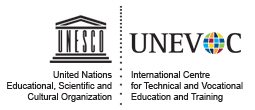

 Read more
Read more







